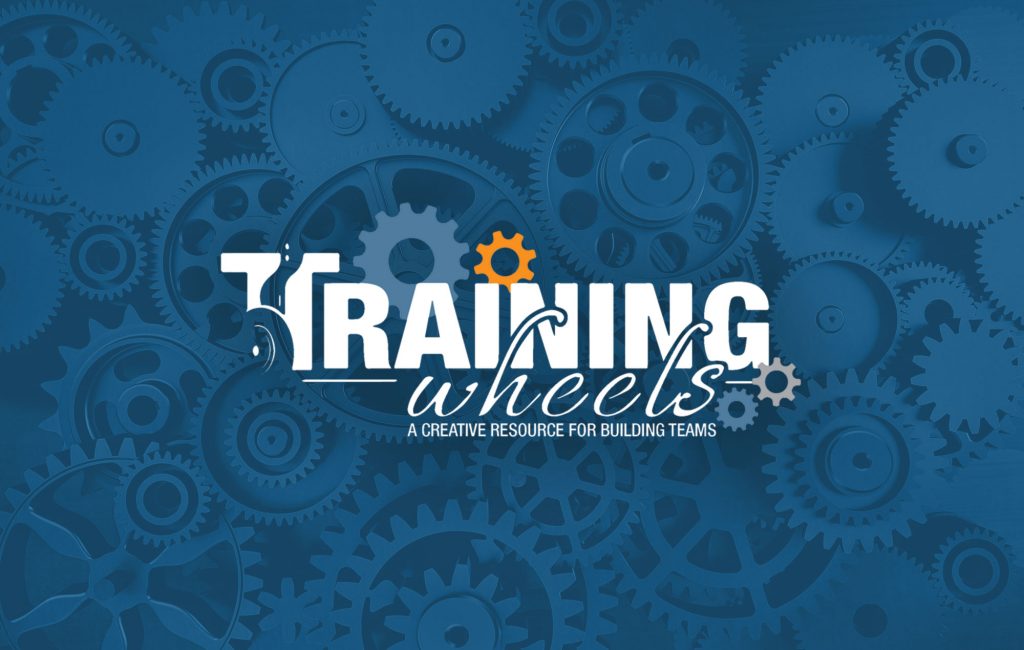
From the Book: Cup It Up, Team Building with Cups, by Chris Cavert and Barry Thompson
Activity Objective: Build the tallest cup pyramid starting with the top level of a single cup.
Facilitated Objective:

Needs Per Group:
Note: We have done Reverse Builds off of the floor (solid concrete or tile), but it’s a bit more challenging to get enough bodies around the structure to support the lifts. You could also use a 2×6-inch board about four feet long balanced across two chairs as a viable option for a building surface. Be creative in order to meet you needs.
Numbers: Create small groups of five to seven players. If you have enough cups and tables, one facilitator can manage as many as 10 groups building at a time.
Time: 20-30 minutes
Procedure: Based on the dynamics of the Reverse Build, we consider this a small group activity (so far, anyway). Groups of five to seven players have worked well for us. If the situation arises where on group needs more hands, they can ask players from another group to help. (this consideration might not work if the build is set up as a competitive activity. Notice, we did say “might not” work. We’ve seen competitors help each other.)
Give each group a nested stack of 36 cups and a designated building area. Here is generally what we say when we present the activity:
“For each small group, your objective is to build the tallest pyramid using the cups provided. In our definition, a pyramid consists of stacked rows of cups (not a nested stack) in which each row will have one less cup than the row below it. For this build however, you are required to start form the top row of the pyramid – one cup. To begin, set this one cup down on your building surface. Then, anyone in you group can lift this first cup so that two cups can be placed under it, forming the second row of the pyramid. From this point forward you are only allowed to lift the bottom row of your pyramid structure – the row touching the table – to add the next row underneath. All other cups in the pyramid can be touched or supported by any players index fingers (only) before, during and after a lift, but they may not be grabbed and/or lifted in any way. Again, only the bottom row of the pyramid can be lifted. If any part of your pyramid structure falls apart you must start your building process over from one cup. If you manage to use all the cups provided at the start of the build, more will be given to you. After I answer any questions you have about the direction, you will have 15 minutes of building time to see how high you can get your pyramid.
Most facilitators will answer questions without giving solutions to the challenge. (However, if the group’s objectives allow for help or “coaching”, answer in the way that will work for them.) We often simply refer back to the rules provided. See Facilitation below for some typical inquiries.
This general presentation does not suggest any sort of competitive encounters. However, if you’ve been leading team building activities long enough, you know, in most cases, the competitive spirit does present itself. In the short life of this activity so far, we have yet to see groups help each other, but our hopes are still high. We typi8caly run the build for about 15 minutes to see how well each group can perform. Success is fairly certain for the first three or four rows. After, four rows it’s up the creativity, focus and tenacity of the group. Cups will be falling. We keep encouraging attempts as long as there is time to build.
When our program objectives include competitive activities, we set it up a bit differently. We allow the small groups four to five minutes to practice and form a building plan. Then we give a 10-minute building window to achieve the tallest pyramid possible. They can use their 10 minutes in any way they like, as long as they stay around their building area (table) during the build. When the 10 minutes is up (i.e., when we say “Stop~”) all the cups standing are worth a point value. How you score it will be up to you. We give one point for every cup that is touching another cup in a row above or below it. Or, simply count the number of rows – there are more ties in this scoring method.

As you might have determined already, the Reverse Build does not require a high level of energy, but a determined amount of focus. So, choose wisely when programming this one – what groups will benefit from this type of activity and where do you place it in your sequence?
Safety: At this time, no real safety issues have been observed. Bodies do tend to get pretty close to each other during the lift, so potentially some space issues could emerge.
Facilitation: During the Reverse Builds we have facilitated so far, we have found it important to provide our expectations of the pyramid structure. When beta testing this activity a number of groups spent a lot of time trying to find loopholes in the rules and spent little time building. We wanted this activity to help us work on the facilitated objective of working through/with failures – since, in most cases, cup tumbling does occur during the process. When we started sharing our expectation of a pyramid more hands-on building ensued. The following sentence in the directions that specifies our expectations:
A pyramid is defined as each row (not a nested stack) of cups will have one less cup than the row below it.
During the cooperative version we move around the groups and continue to encourage working together and starting over after a collapse. We like to reiterate that the build is about “sticking to it: overcoming the collapses (great metaphor to come back to), and improving to the best of your ability. We also use this one in the hopes that groups will share strategies and maybe even resources (e.g., people) to help others be successful.
During the competitive version we have seen two different trends. Die hard builders (DHBs) and waiters (in the act of waiting – not waiting tables). DHBs are motivated by building the tallest pyramid, using all the time allotted = especially if they know the “world record” (to date eight rows – eight cups at the bottom level – is the highest for a group of seven players following the guidelines above (see Variations below for another presentation option and world record.)
Waiters will build the highest pyramid in relation to other groups. If they see another group has five cups at their base the waiters will go to six cups. If a group gets six cups the waiters try for seven. If they find themselves in the lead with time left, they will wait it out to see if they stay on top. Some with even be happy with a tie if little time remains. All good things to discuss once the activity is over.
One more thing we would like to share at this time. If you have the opportunity to build outside atop a solid flat surface, be mindful of the wind. It can be an asset or a detriment depending on your group’s goals.
Observations/Questions:
Variations:
Purchase a copy of Cup It Up here.
For more info about Chris Cavert visit his website at www.Fundoing.com.

Founder / Facilitator / Big Wheel of Training Wheels